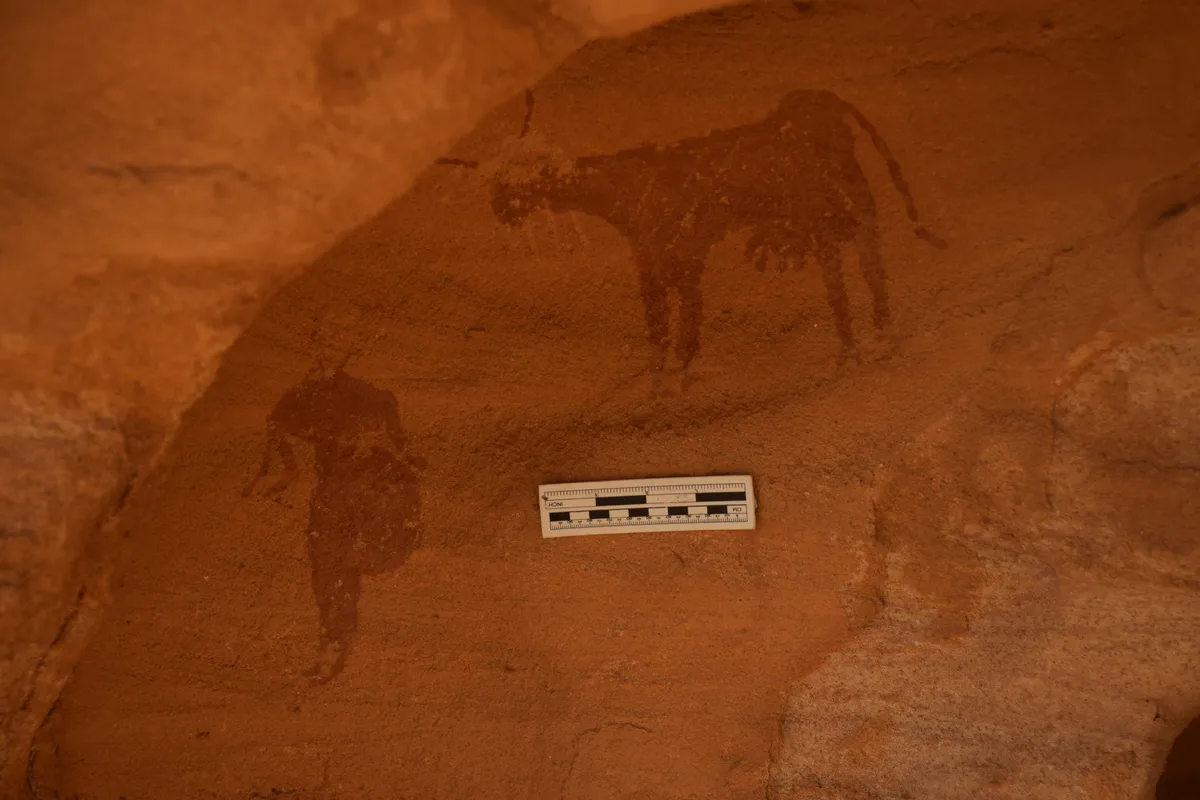Newly discovered rock art in Eastern Sudan's Atbai Desert reveals a strikingly different Sahara from 4,000 years ago. Current archaeological findings at sites near Wadi Halfa, a city close to the Egyptian border, depict a region that was once verdant and teeming with diverse wildlife and ample water sources, in stark contrast to its present arid state.
This artwork, dating back to 4,000 years ago, suggests a swift and significant environmental transformation in this area of the Sahara. The study, conducted by archaeologists from Macquarie University, unearthed 16 sites showcasing depictions of humans, antelopes, elephants, giraffes, and notably, cattle—a surprising element given today's dry conditions which make cattle rearing unfeasible.
Dr. Julien Cooper, who spearheaded the Atbai Survey Project in 2018 and 2019, remarked on the peculiar presence of cattle in the desert's rock art, underscoring the drastic environmental shift from a lush to a hyper-arid landscape. He emphasized that the cattle imagery is a critical clue to understanding the Sahara's greener past.
Historically, from about 15,000 to 5,000 years ago, enhanced monsoon rains across Africa, driven by shifts in Earth's orbit, transformed the continent into a fertile expanse with lush grasslands and lakes. This era ended abruptly, dramatically altering the landscape and impacting the indigenous populations and fauna. The area around Wadi Halfa was nearly deserted, with remaining inhabitants transitioning from cattle to sheep and goats, which significantly affected their way of life, from dietary changes to shifts in migratory and societal structures.







